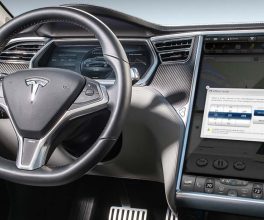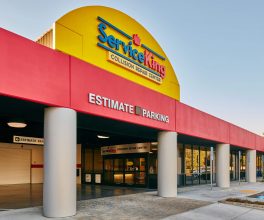
Choosing the right product and supplier can increase operational efficiencies, save money and improve compliance, reports Catherine Chetwynd
Selecting the right fleet management software system and supplier can be a time-consuming and confusing task. As well as a vast number of packages and modules being available on the market, service levels and support also varies from supplier to supplier.
However, while this may seem an onerous task, taking on a new system tends to be the beginning of a long-term buyer-supplier relationship, so thorough market and product research is necessary.
The first step is to be clear on what you want the software to do. “Fleet managers need to understand what they want to get out of their fleet management software,” says John Pryor, chairman of fleet operators association ACFO. “And then they need to make sure it is compatible with the systems they already have.”
Maurice Elford, fleet manager of housing association L&Q, adds: “Is it for keeping records? Will you drive reports out of it? What do you want to record on it?
“We upload our fuel data, maintenance; we have everything in one place.”
The increasing number of sources of data such as telematics, online licence-checking services and fuel cards, may mean managers require their software packages to accept information from many places.
In addition, those running a large fleet may need customisable tools that allow them to create workflows, approval processes, key performance indicators (KPIs), and the like, and that can be developed to respond to the growth or changes in the fleet, company or industry.
Highlighting specific requirements can also often lead to a supplier creating specific functions. For example, North Yorkshire Police worked with Civica to develop a module to increase the usage of under-utilised vehicles. They were re-classed as pool cars, making them available to anyone in the force.
This enabled the organisation to save £33,000 in the first 12 months of the initiative and cut CO2 through reducing the use of higher-emitting grey fleet vehicles.
Drive Software Solutions often sees large fleets, its specialism, using the wrong type of system for their needs. “Again and again we have found myriad systems from multiple software providers being run in parallel,” says Simon West-Oliver, sales and marketing director at Drive Software Solutions.
“For the most part, none of these systems were designed with anything other than a single function in mind, much less integrating with others. So fleets end up having multiple repositories of customer and vehicle data – and that’s where expensive mistakes start to happen.”
Key to success in finalising specification is to involve all parties who may use or rub shoulders with the software: drivers, finance, HR and more.
“A lot of businesses operate in virtual silos, so it is important to involve the whole business and to fully understand their objectives, along with the problems they typically encounter,” says Martin Evans, Jaama managing director.
Other areas to consider include current problems that can be fixed and the impact of that on other departments, where relevant data is held and what problems disparate locations may have and how this will change.
When drawing up a list of requirements, it is also worth considering if any future changes to a fleet operation will affect what is required from the software package.
“Think about tomorrow as well,” says Elford. “One of the biggest pitfalls is systems that do not offer the flexibility to make alterations.”
Failing to prepare carefully compromises the fleet manager’s ability to write a tender document which allows potential suppliers to understand exactly what is required. This may lead to a mismatch of software and fleet.
“Fleet management technology is about marrying up vehicles, drivers and requirements; it is simply a tool to facilitate the professionalism of that delivery,” says Geoffrey Bray, chairman of Fleet Industry Advisory Group. “Technology is our servant, not our master.”
When the list of requirements is finalised, an obvious place to start when looking for a supplier is the major players such as Chevin Fleet Solutions, Jaama and Civica.
However, organisations should also be open to contacting smaller suppliers, says Carl Nicholson, fleet manager at North Somerset Council. “We were trying to cut overheads by reducing staffing costs, so we needed a system that would automate a lot of processes,” he adds.
“We were finding it quite hard to get the development we needed to make a system that worked – being 100 or so vehicles, we did not have the clout of some of the bigger players.
“We were trying to find a solution that linked our telematics data and enabled a web-based, more efficient fleet system.
“Do not go to the big players straightaway because web-based technology has changed the game.”
Nicholson says the council’s telematics provider Quartix suggested its software partner FleetCheck and “the pricing was significantly better”.
He adds: “We have had FleetCheck for two years and are very happy with it.”
Having narrowed down potential suppliers to a manageable number and defined the specification, a fleet manager should “send the vendor a request for information (RFI) containing specific questions: what services are provided, what service level is relevant and what it covers”, says Ashley Sowerby, managing director of Chevin Fleet Solutions. “Suppliers should be able to use this to explain how their software meets your requirements.”
SLAs should also be appropriate to the risk to the business if something goes wrong with the software.
A supplier should also be asked to compile a timeframe for implementation. Introducing a fleet software package is not an overnight process.
Case study: Skanska
Improving usage of data to reduce costs and cutting fleet administration were two reasons behind Skanska’s decision to introduce Jaama’s Key2 fleet management software package.
The project development and construction company also wanted a system that was future proof, with the ability to evolve modules – and develop new ones – to keep the software up to date.
“We wanted a system to manage our vehicle and equipment assets, hold all information in a single location, and to interface with our HR system, feed data back to our finance department and link with our workshops and stores,” says Julie Madoui, head of fleet at Skanska.
The company operates a UK fleet of around 2,500 vehicles from company cars to heavy commercial vehicles, and also uses its vehicle management software to manage some plant equipment assets.
Skanska’s expansion through acquisition meant the fleet was operating on two parallel systems, which proved administratively cumbersome and operationally inefficient.
Fleet provides a range of services to customers, so the chosen system was required to undertake a significant volume of financial work such as cost allocation and vehicle and driver management.
The software package also had to manage vehicle service, maintenance and repairs on Skanska’s and some third-party vehicles at the company’s network of workshops. The web-based, modular Key2 system enables Skanska to manage all activities in one place.
“The management information available is powerful and has enabled us to remove lots of spreadsheets,” says Madoui.
“The ability to link data from different parts of the system enables us to make business critical decisions.”
Questions to consider
Web-based or enabled?
- Is your system web-based or web-enabled?
- How do the speeds of the different systems compare?
- Which would suit your requirements more?
Cost of investment
- How does the cost of the software break down?
- Are there any extra charges?
- How and when are payments made?
- Is hardware paid for upfront?
Implementation process
- What happens during implementation phase?
- How long is it likely to take?
- Who be involved in implementation?
- Is there an implementation fee?
Contract terms
- Am I locked into a contract?
- How long does it last?
- How do I terminate that contract early?
Training
- What training is provided as standard?
- How long is the training likely to take?
- Does the training involve only the fleet manager, or every staff member who will use it?
- Training – in-house, remotely or even online?
- Will there be an additional cost for any further training after implementation
Service support
- What happens if the system crashes?
- Is there a back-up server?
- Do you pay an additional/monthly fee for service support?
Software updates
- How often will these updates be necessary?
- How often will it be necessary to build a whole new system?
- How are mini updates carried out – remotely or in-house?
- What will the updating process consist of?
Security and data
- What security measures are in place?
- Who owns the data? Will it be lost if you change provider?
- Can system pull in data from other sources?
- What systems will it integrate with?
Courtesy of Fleet News
























































